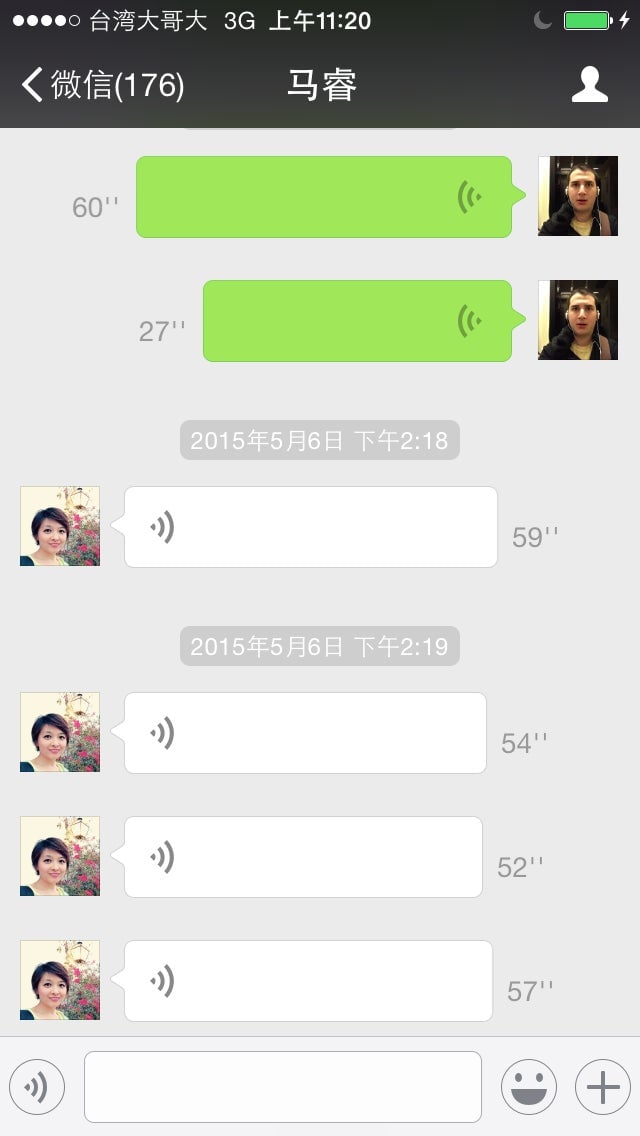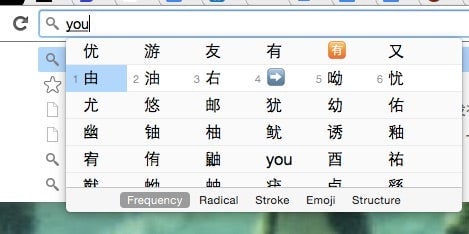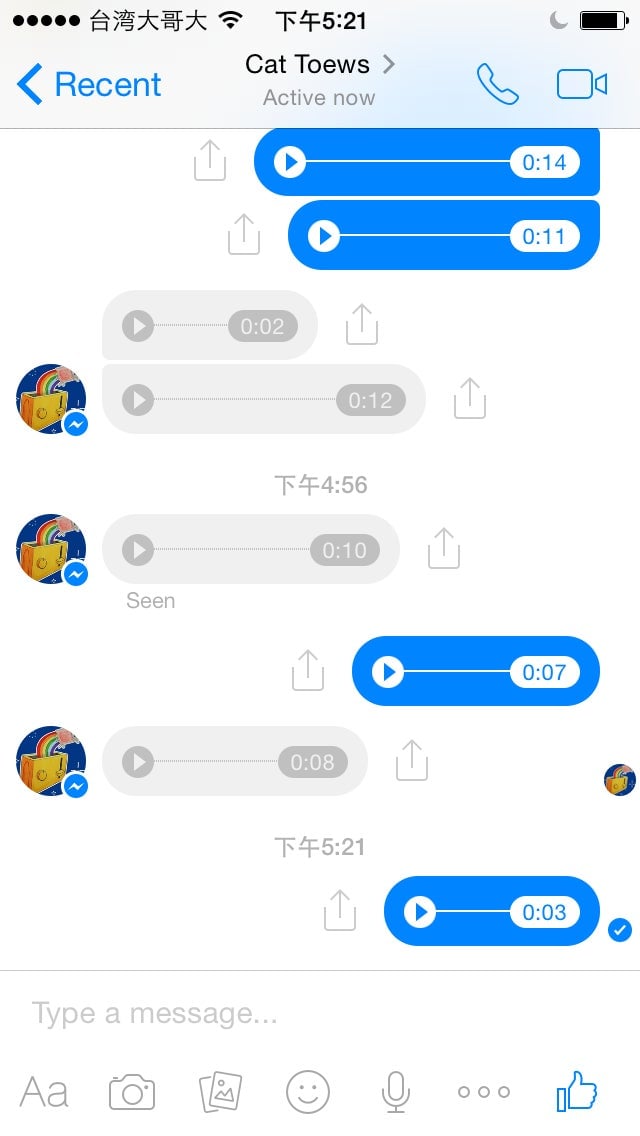Stop texting right now and learn from the Chinese: there’s a better way to message
Voice messaging—or sending short audio clips instead of text messages—has taken China by storm. Step on a Beijing subway and you’ll see people barking into their phones intermittently, as if they’re using walkie-talkies. On WeChat, the popular Chinese messaging app with over 500 million monthly users, the average chat window looks something like this:


Voice messaging—or sending short audio clips instead of text messages—has taken China by storm. Step on a Beijing subway and you’ll see people barking into their phones intermittently, as if they’re using walkie-talkies. On WeChat, the popular Chinese messaging app with over 500 million monthly users, the average chat window looks something like this:

Note the absence of text blurbs. In theory, voice messaging (also known as “push-to-talk”) should be popular everywhere. Rather than fumbling with a tiny pixelated keyboard, users simply press a button and speak. Typos are an impossibility, because the recipient gets a recording, not text. You can free up your other hand, and watch where you’re going—much safer than texting while you walk (or drive).
Push-to-talk messages that you send and receive are more intimate, more nuanced and more sophisticated than the typical poorly-spelled, hastily-written text. You can be flirtatious more easily, or sincere. Funny messages can be replayed over and over again, and you feel much closer after hearing someone’s voice than you would after reading their text.
Yet push-to-talk messaging remains a seldom-used feature in most countries—a cousin to old school voice-mail and answering machines. Why are the Chinese gaga over push-to-talk, then?
Most Chinese will say it’s because the language is notoriously hard to type. Inputting Chinese script on a computer or phone requires typing in pinyin, or roman script, and then selecting one of multiple characters with analogous pronunciations. For example, after inputting the letters Y-O-U, a user will then choose one of the following characters.

It’s a pain to be sure, and many of China’s leading internet giants earned their popularity through third-party keyboards boasting better predictive technology than the default options on computers.
But the pain of typing is only part of the story. In Taiwan, Mandarin is also the lingua franca, yet consumers there seldom use push-to-talk on Line, the nation’s chat app of choice. Instead, they type using an equally clumsy input method, or use handwriting-recognition software to manually draw out each character.
“If someone sent me a voice message, I probably wouldn’t listen to it,” one Taiwanese Line user told Quartz. “I’d be afraid that the people around me could hear it. It’d be weird.”
Chinese people have less of an aversion to speaking loudly in public than other cultures, partly due to an appreciation for all things renao, or “loud and lively.” While Taiwan tends to keep renao confined to restaurants and parties, in mainland China nearly every public place is a designated “Renao Zone.” Acting boisterous is a sign of confidence and importance. While some Chinese might deny it, the culture’s enthusiasm for being loud in public has made push-to-talk acceptable.
“Chinese and Taiwanese express themselves very differently,” Thomas Luo, founder of Pingwest, one of China’s leading tech blogs, told Quartz. “For me, I always speak loudly, even in my office. But Taiwanese people are more quiet.”
Beyond culture, China’s internet users have long been accustomed to talking to each other online. In the mid-2000s, when the nation’s internet cafes weren’t struggling like they are today, online gamers would scheme with one another late into the night. But instead of communicating in text, they would use YY, an online service that let them communicate via voice messages.
“There [was] no time for them to type or text. When they play games they are very concentrated, so they are very busy with their hands,” a YY executive told NPR in a 2015 interview.
YY later evolved into a karaoke-centric social network, earning healthy margins on virtual goods and eventually going public in the US. But Luo said the company’s lasting legacy lies in popularizing voice chat: “People already had these kinds of habits on desktop PCs. So when they shifted to mobile, they just kept them.”
Much like informal rules have evolved for best texting practices, there are do’s and don’ts for voice messaging in China. In some cases, one’s educational background will even dictate how to send voice messages.
“People that aren’t very well-educated will use voice messages no matter what, whether the sentences are long or only one second,” says Luo. “But middle-class or well-educated people will send voice messages if they want to say something that is informal but also complicated. If it’s simple, they’ll just type.”
Culture, language, and internet history partially explain push-to-talk’s popularity in China. But why it takes off or fails in other countries is sometimes a puzzle.
Like China, India is home to many dialects and scripts, and a large population of less-educated people. WhatsApp has over 70 million users there, but most of them cling to text messages. In Argentina, on the other hand, push-to-talk has supplanted text messaging for its WhatsApp-addicted youth—even though Spanish is relatively simple to type out.
There’s no reason why push-to-talk shouldn’t catch on in cultures where people are already talking on their phones, loudly and publicly.
If you want to try if for yourself, here’s how: On Facebook Messenger, open a chat and push the microphone icon towards the bottom right of the screen. Push the red record button, hold, and release. On WhatsApp, push and hold the microphone icon on the bottom right area next to the keyboard.

You won’t hate it. It’s not like an answering machine. It’s not like talking to yourself—it is just like speaking into your phone (or your headphones with microphone if you use those). No, no one is looking at you funny.
Now, go on and enjoy the freedom and convenience of this new form of communication. And leave the texting behind.